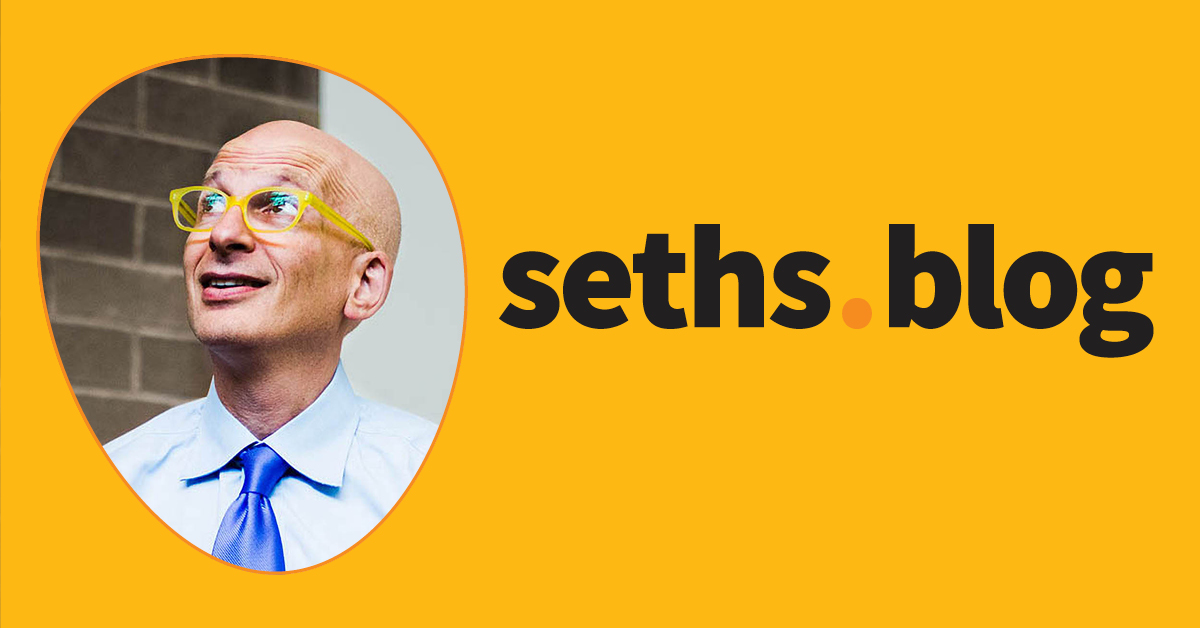- The Solo Founder Newsletter
- Posts
- 📰 Future Founders, Here’s How to Spot and Build in Nonobvious Markets
📰 Future Founders, Here’s How to Spot and Build in Nonobvious Markets
... Another type of nonobvious market that sticks out to Gil is the one that appears to be too competitive at first blush, but is revealed to be wide open after a second glance.
📰 In today’s pick…
Miscellaneous
Excerpt:
Arguments about taste are more common than ever before. The long tail makes it easy to find what you like, and to talk about what you don’t. There’s no accounting for taste, and that’s a good thing.
Because taste is useful.
…
But that habit can easily cross a line. It turns out that birds are real, that the Earth isn’t flat and that 2 + 2, in all common parlance, does equal 4. To argue about these things isn’t useful.
Seth Godin’s blog
Marketing
Excerpt:
Cold-emailing can be one of the most impactful habits of your career — it has been for mine.
Early in my career, I made it a habit to send out two dozen cold emails every week to broaden my network and expand my thinking.
Through the compounding effect of doing this every week for over five years, this habit helped me:
Grow my network by 100x. Land interviews at companies like Spotify, Stripe, and TikTok. Get jobs at Meta and Google. Land six-figure clients for my business. Meet some of the most remarkable people in the world, including unicorn founders, Midas-list venture capitalists, and Silicon Valley leaders, including a C-suite executive at Meta. I've learned that sending cold emails has a significantly disproportionate amount of upside relative to the effort required. It can be the single most impactful habit in your career — it has been for mine.
I've observed most people aren't sending enough cold emails, and those that do aren't using an effective formula.
Entrepreneur Magazine
Strategy
Excerpt:
… Another type of nonobvious market that sticks out to Gil is the one that appears to be too competitive at first blush, but is revealed to be wide open after a second glance.
“A busy market isn’t a negative signal in and of itself. If it’s a good idea, there will be others with shovels digging for treasure right alongside you. And even if they got there first and their hole is deeper, that shouldn’t deter you,” he says. “If you do some poking around, you may find that it’s actually quite empty, whether that’s because no one has a great product or there’s lots of players with little differentiation. When it comes to crowded markets, you need to figure out if there are dominant players who will kill you or if there’s a real chance to be the first to deliver what customers actually want.”
You can still win even if someone else gets there first. Dig deeper to find differentiation and capture what they’re leaving on the table. And there is no shortage of examples to learn from. “When Google started, there were already 10 other search engines out there. Or look at Dropbox and Box. I pulled up all the old articles from that era on cloud storage and there were literally a dozen other companies listed and they were mentioned as footnotes and treated as two people showing up late to the party,” says Gil. “The same is true for social. Why would you have funded Facebook with Myspace or Friendster out there? And more recently even, people thought social was game over in 2010 and failed to foresee the rise of Instagram, Snap and Chinese platforms.” As for a market with a current opening for entrants to come in, Gil cites custom ASICs in the machine learning semiconductors world as an example. “It looks crowded because of NVIDIA GPUs and Google’s recent advances with TPUs, but I think that the market is still wide open,” he says.
Given that many of the most interesting markets always look crowded, Gil has developed a series of questions to hunt for signals of open space:
Size up the competition. Are the competitors any good? Is it a great team than can crank out fast follows? How strong is their brand? “Many good ideas have bad implementations, so if you can come in strong and do it well you can win,” says Gil.
Ideas
Excerpt:
… 3. Build For the Creator Economy
The Creator Economy has opened a new avenue for SaaS ideas, focusing on partnerships with content creators who have substantial followings.
This approach, known as Creator-Led SaaS, involves identifying opportunities where a creator's unique insights and audience engagement can lead to successful software solutions.
This may not be for everyone, but if you have any connections to content creators, I highly recommend reaching out with this approach.
If you don’t, you can still reach out to these individuals and pitch them on it. May have to send a 100 DMs to get a reply, but that 1 reply could change your life.
Understanding Creator-Led SaaS: This strategy taps into the creator economy, where individuals with large online followings monetize their content through various channels.
Unlike traditional product endorsements, Creator-Led SaaS involves developing a software product that the creator can offer directly to their audience.
Indiehackers
Strategy
Excerpt:
Instead of examining all the things you can add to make the service experience amazing, start with identifying the things you can jettison. Why have a cashier ask a customer if they found everything they needed? It might be better suited to have someone on the floor by the cashier stands, asking customers if they found everything they needed before they start the checkout process. Instead of telling customers their call is important, don't say it at all. Inform them about the actual length of the wait time, with the option for a call back at a time of their choosing.
When we consider what can be removed, it helps us focus on customers' obstacles and frustrations, which likely include actions that we might automatically do because they've always been done that way. Looking at what steps and elements we can remove from the customer experience also helps us focus on making the things that count even better. We're not distracted or wrapped up in protocol-driven platitudes, but rather actions and behaviors with a genuine, utilitarian impact. By eliminating the rote responses to customer needs, we enable our staff to become more genuine, have leeway to problem solve, and identify creative ways to impress and delight.
Entrepreneur Magazine
Sales
Excerpt:
How do you find your first users?
This might be the most common question among indie hackers — especially those working on their first products with small or nonexistent marketing budgets.
So I asked a bunch of successful founders how they got over this initial hurdle.
From their answers you'll learn that you definitely don't have to burn through your savings or raise cash from VCs to get your first users in the door. This is the good news. The bad news? You might have to work just a little harder (and smarter) than those who do.
Check out their answers below.
Indiehackers
This is the free edition of The Solo Founder Newsletter. If you haven’t upgraded, to sign up for the full newsletter experience, plus the monthly roundups and additional perks, click here



